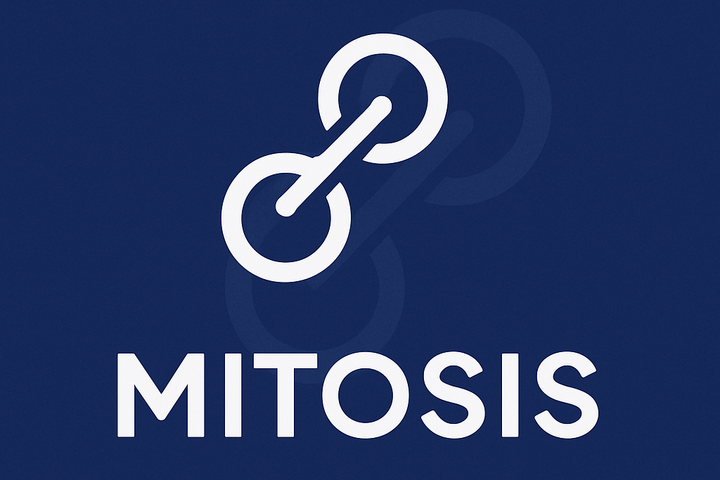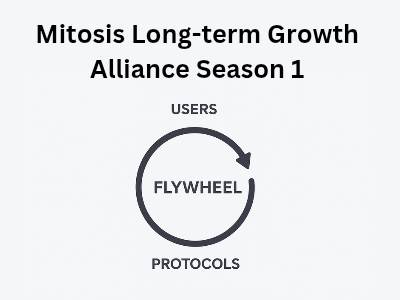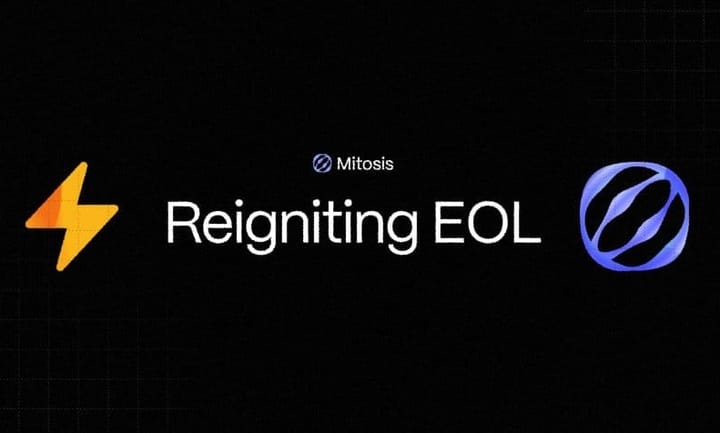EOL, Programmable Liquidity & LRTs: Innovations That Brings Interest to Mitosis
When I first stumbled across Mitosis, it wasn’t just another blockchain name on a crowded list of protocols. It felt like a project with real engineering vision, something willing to rethink old patterns and introduce new building blocks that actually change how developers and users interact with decentralized finance.
While most blockchains brag about speed or low fees, Mitosis quietly pushes forward with innovations that make liquidity more flexible, user incentives more aligned, and integrations far more rewarding.
Three ideas in particular caught my attention and have kept me coming back to watch its progress.
→the LRTs Program
→Programmable Liquidity
→EOL: Ecosystem owned Liquidity.
Each of these has its own unique role in the Mitosis ecosystem. Together, they create a synergy that makes Mitosis not just a chain, but a playground for anyone serious about DeFi’s future.
The LRTs Program : Earning Beyond Your Wallet
Liquidity Reward Tokens (LRTs) aren’t just another form of staking or yield farming. In the Mitosis ecosystem, the LRTs Program allows users to earn points across partner protocols, essentially rewarding them for being active liquidity participants not just on Mitosis, but in a broader network of connected ecosystems.
Think about it: in most DeFi environments, you provide liquidity to a pool in a single transaction and you earn rewards in that same pool’s native token. It’s a closed system. You’re incentivized to stay within one silo, and while that’s fine, it limits your earning potential and your ability to diversify.
Mitosis flips that model. With LRTs, your activity is recognized across multiple integrated protocols. That means the liquidity you provide doesn’t just generate one-dimensional returns, it accumulates points that can later be redeemed, swapped, or leveraged in ways that transcend a single dApp.
The real magic here is in cross-protocol cooperation.
LRTs act like a loyalty points system that spans multiple platforms. It’s a bit like earning frequent flyer miles, but instead of being tied to one airline, your points are valid across an alliance of carriers.
For users, that’s more flexibility. For developers, it’s an incentive mechanism that encourages retention and multi-platform engagement.
And from a broader perspective, this is a step toward solving DeFi’s fragmentation problem. Users shouldn’t have to choose between earning in Protocol A or Protocol B. With Mitosis’s LRTs, they can participate in both, and their rewards become an interconnected layer of value.
Programmable Liquidity : Liquidity that is never idle
Liquidity provision has always been the lifeblood of DeFi, but in its traditional form, it’s also been blunt. You drop tokens into a pool, you hope the yields are good, and you accept that your liquidity will just sit there following static rules.
Mitosis takes a different approach. With Programmable Liquidity, liquidity isn’t just deposited, it’s instructed. This concept means that liquidity can have conditions, triggers, and automated behavior. It becomes dynamic.
Imagine telling your liquidity, “Stay in this pool until the APY drops below 10 percent, then automatically shift to another pool offering better rates.” Or, “Provide liquidity to this protocol until my rewards reach a certain target, then withdraw half and restake in a different asset.”
This turns liquidity from a passive asset into an active participant in your investment strategy. And because Mitosis is designed with modularity in mind, these rules aren’t limited to a single application. You can integrate them across protocols and chains, creating liquidity strategies that move seamlessly between opportunities.
Programmable Liquidity also opens the door for more advanced risk management. Rather than keeping liquidity locked in a position that’s exposed to volatility or impermanent loss, you can define conditions that protect your assets. For example, your liquidity could be set to automatically exit if price deviations reach a certain threshold.
For traders, that’s a game changer. For developers, it’s a framework for building smarter dApps that attract users looking for hands-off yet intelligent liquidity solutions.
Ecosystem-Owned Liquidity (EOL): Aligning Incentives for the Long Term
Liquidity is the lifeblood of DeFi, but in most cases, it is rented. Protocols attract liquidity by paying incentives to providers, who can leave at any time. This creates a “mercenary liquidity” problem, where capital flows to wherever the short-term rewards are highest, often leaving protocols vulnerable when incentives dry up. Mitosis approaches this with Ecosystem-Owned Liquidity (EOL). Instead of relying entirely on rented liquidity, Mitosis aims to build and maintain pools of liquidity that are owned collectively by the ecosystem itself.
This has several key advantages:
- Stability: EOL is not dependent on ongoing high incentive payouts to remain in place.
- Control: The ecosystem can decide where and how to deploy its liquidity for maximum impact.
- Alignment: Because the liquidity belongs to the protocol and its community, the incentives naturally align toward sustainable growth rather than short-term gain.
In practice, EOL means that part of the liquidity base in Mitosis is always there, supporting trading, staking, or lending activities without fear of sudden drains. This makes it easier for partner protocols to integrate, since they can rely on a baseline of liquidity availability.
Moreover, EOL can act as a strategic asset. In a market downturn, the ecosystem can deploy its liquidity to stabilize critical pools. In a bull market, it can use it to seed new integrations quickly, capturing growth opportunities before competitors.
Why These Innovations Matter Together
Individually, each of these features: LRTs, Programmable Liquidity, and EOL could stand on its own as a meaningful improvement to the DeFi experience. But together, they form a coherent philosophy.
Mitosis isn’t just trying to win users with high APYs or flashy airdrops. It’s building an environment where liquidity is smarter, rewards are more interconnected, and exits are fair and user-controlled.
Some of the most persistent pain points in DeFi siloed rewards, static liquidity, and restricted exits are being tackled head-on here. That’s why, when I look at Mitosis, I don’t just see another blockchain competing for attention. I see a platform that’s designing for longevity, one that’s thinking about user needs in a holistic way.
The Bigger Picture : Where This Could Lead
The innovations we’re talking about here aren’t just “nice to have” features. They’re stepping stones toward a more fluid, interoperable DeFi ecosystem.
• For Users: The ability to earn across multiple protocols, program liquidity behavior, and exit on favorable terms means greater control and better returns.
• For Developers: These tools are hooks for building more advanced products. Imagine dApps that let users set complex liquidity conditions without ever touching code, or yield dashboards that factor in cross-protocol LRT earnings in real time.
• For the Ecosystem: These innovations reduce friction between protocols and chains, making DeFi less of a fragmented experience and more of an interconnected network.
In a way, Mitosis is building a “liquidity operating system” rather than just a chain. That’s a powerful positioning and one that could draw both developers and users who are tired of the same old liquidity mining playbook.
Final Thoughts
I’ve watched plenty of blockchain projects promise big things and then fade away when the hype cycle moves on. But Mitosis is different in that its innovations are not tied to speculative mania they’re tied to solving real, structural issues in DeFi.
The LRTs Program gives liquidity rewards a cross-protocol reach. Programmable Liquidity gives your capital a brain. EOL gives you the freedom. Put together, these are not just incremental improvements, they’re foundational shifts in how we think about liquidity in decentralized finance.
If the future of DeFi is about giving users more control, flexibility, and interoperability, then Mitosis isn’t just keeping up, it’s setting the pace.



Comments ()